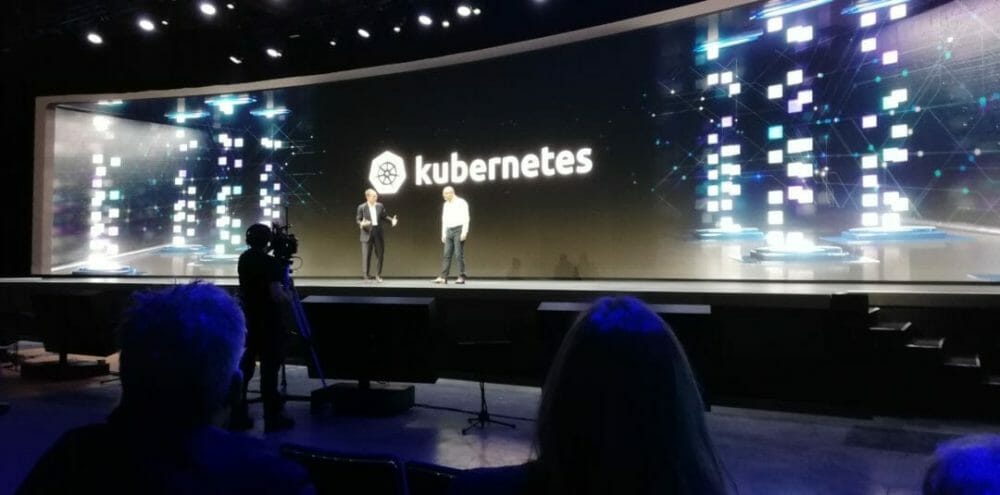A few years ago, Pat Gelsinger, CEO, VMware, made a promise to his customers: to empower them with access to any app on any device, from any cloud.
No doubt, keeping that promise is becoming more challenging. Today, enterprises are grappling with a broader diversity of apps. While existing apps, off the shelf apps and new cloud-native apps are being run across more clouds (both private and public). Customers want to contain this complexity.
According to Gelsinger, VMware now has a solution.
Speaking on stage alongside Joe Beda, principal engineer, VMware, at VMworld Europe 2019, he announced the rapid advancement of VMware Tanzu, a new portfolio of products and services designed to transform the way enterprises build, run and manage software on Kubernetes.
VMware Tanzu brings together VMware technology and expertise to help customers build modern applications, run on a common Kubernetes framework across clouds and manage their entire footprint from one point of control.
More about the updates
Updates include the rollout of a beta program for Project Pacific, a new Kubernetes-native evolution of the vSphere platform, as well as the debut of a new VMware Cloud-Native Master Services Competency that will enable current and future partners to build and support Kubernetes-based platforms.
Project Pacific, which will be in new packaging when available, unites Kubernetes with VMware vSphere. It enables VMware vSphere administrators—using the tools they already know—to deploy and manage Kubernetes and container infrastructure anywhere VMware vSphere runs—on-premises, in a hybrid cloud, and on hyper-scalers.
“Project Pacific unquestionably establishes vSphere as the platform for modern applications and delivering Kubernetes at scale,” said Gelsinger.
How to make containers an IT architect’s best friend
Project Pacific will include fully integrated container networking, which can dramatically simplify Kubernetes implementation, deployment and management. Project Pacific will also include built-in cloud-native storage, which will enable developers to provision any vSphere- supported storage on-demand, in a fully-automated, scalable fashion.
VMware Tanzu Mission Control manages conformant Kubernetes clusters from a single control point regardless of where they are running—vSphere across hybrid clouds, public clouds, managed services, packaged distributions and do-it-yourself (DIY) Kubernetes. Operators will be able to set policy for access, back-up, security and more to individual clusters or groups of clusters across environments. Developers will be able to access Kubernetes resources via APIs in a self-service manner.
Democratisation of Kubernetes
According to Beda, it’s all about democratising Kubernetes, “Kubernetes can adapt to all these different environments but can sometimes be very difficult to configure, so our goal at VMware was to provide you with all the benefits of Kubernetes without having to be deemed a Kubernete experts,” he said.
According to Ray O’Farrell, executive vice president, VMware, customers have responded positively to its holistic vision for VMware Tanzu and Project Pacific.
“There is demand for solutions, services, education and training to help customers harness the full potential of Kubernetes and successfully build, run and manage their applications and multi-cloud Kubernetes clusters,” he said. “That demand has resulted in overwhelming customer response for participation in beta programs for both Project Pacific and the VMware Tanzu Mission Control.”
“While enterprises are increasingly adopting Kubernetes and cloud-native infrastructure, most are early in their journey,” commented Jay Lyman, principal analyst, 451 Research. “Kubernetes can help organisations achieve consistency and drive developer velocity across a variety of infrastructures, but enterprises also require effective control, policy and security capabilities. Building on its acquisitions, organic innovation and open source contributions, VMware has staked out its place as a leader in this rapidly evolving cloud-native industry.”
Related articles
Is your technology business structured for success?
Understanding the viability of blockchain in supply chain management
Driving business value with responsible AI
Emerging technologies, are they set to transform business?
EU artificial intelligence guidelines will help unlock potential of AI technology










